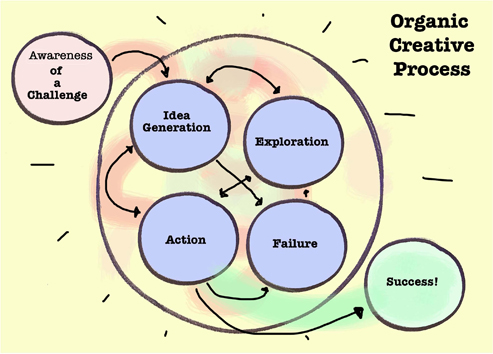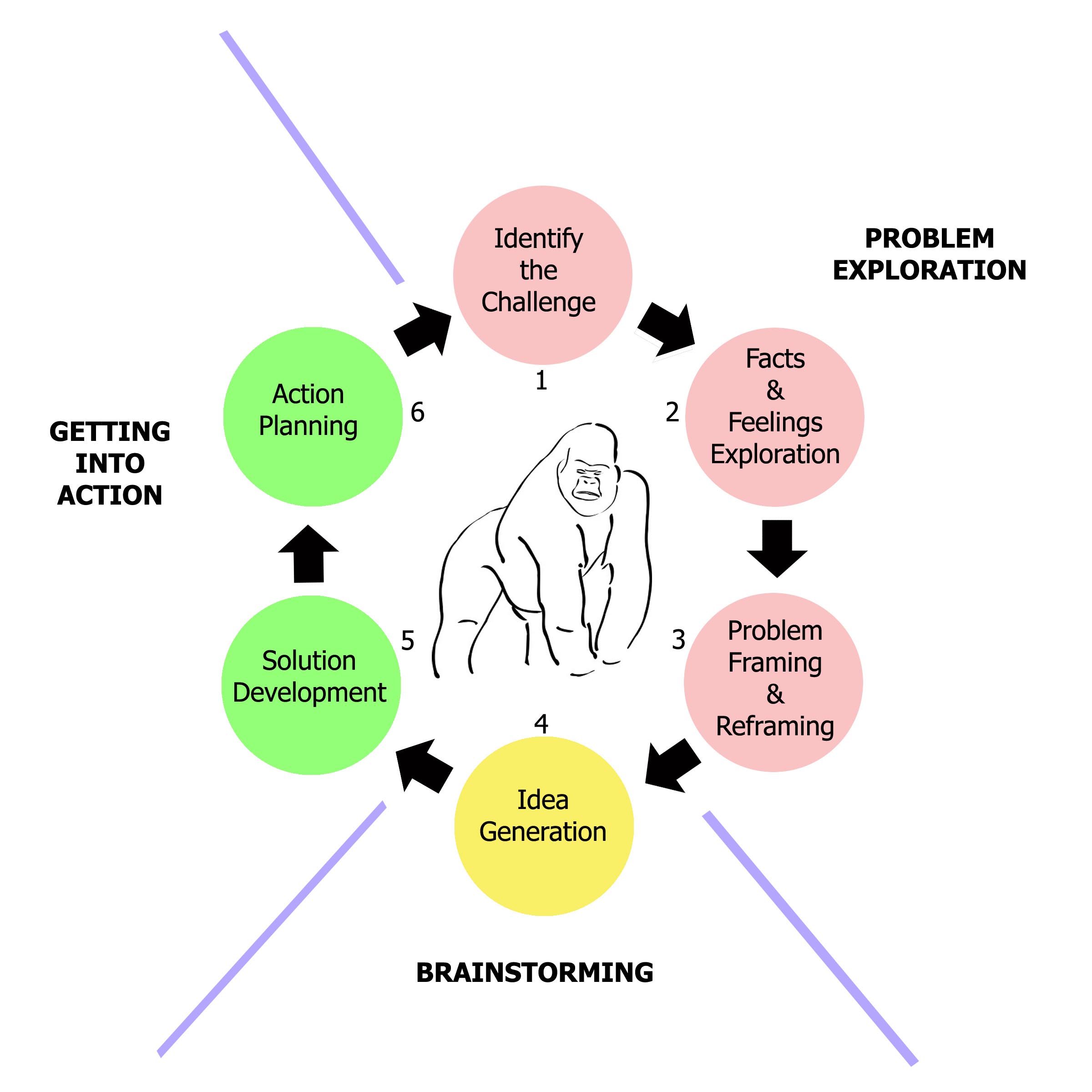 I was doing a training session this past week and I was confronted by one of my students. I was giving an overview of CPS* which is a framework for structured creative problem solving. Someone asked the obvious, and in a somewhat confrontational way — Can this really help our business? The implication was that learning a structured creative process was a waste of time.
I was doing a training session this past week and I was confronted by one of my students. I was giving an overview of CPS* which is a framework for structured creative problem solving. Someone asked the obvious, and in a somewhat confrontational way — Can this really help our business? The implication was that learning a structured creative process was a waste of time.
It’s a good question. Why would you pay for expensive training if you believe that creativity can’t be structured? If you believe that you can’t capture that lightening in a bottle, it would be hard to see the value of a structured creative process like CPS.
But you can capture that lightning in a bottle.
In my view, a structured creative processes like CPS is a foundational block for innovation. Innovation without an underlying creative process leaves it to individuals and teams to simply “be brilliant.” That happens, sometimes. People are so motivated and so smart they come up with new products and services because they have great ideas and they figure out a way to make them real. And, I’ve seen many start-ups and big companies fail miserably to innovate consistently — companies like BlackBerry.
How does a a company like BlackBerry with a lot going for it, including money and talent, not innovate? My answer, there is a flawed foundation under their innovation efforts. We can argue about why BlackBerry failed. In my view one analysis is that their innovation efforts were mis-focused because they were working on the wrong problem. They did not understand the market well enough to see it was consumers driving the market, not business customers. All the best ideas in the world are for naught if they are answering the wrong question. Structured creativity helps you answer the right question.
There are certainly a lot of people out there who believe that creativity can’t be taught. It’s a very common (if wrong-headed) belief — that you either are creative or you’re not, and that creative ideas are like lighting bolts from the sky. A famous Hollywood actress that I worked briefly with on a non-profit project, (I won’t mention names here) rolled her eyes when I said that creativity can be taught. She said directly, “I don’t believe that”. I guess if my entire identity was tied up in having a special creative gift, I might reject the notion of structured creativity too!
I get that creativity is a mysterious thing and that there is a magical quality to it when it happens. We’ve all had Aha moments haven’t we? Wow does it feel good when they arrive. It’s also incredibly defeating when they don’t arrive, especially when you really need a good idea. Personally, and for many years, I felt that there was nothing you could do to improve. When ideas weren’t coming, I would grow anxious and fearful. I can tell you this, fear and anxiety is not the best mindset for having creative ideas. Thankfully, I learned that I was wrong — there is something you can do to improve. Everyone has creative capacity, even if you’re not artistic, or brilliant. Focusing that capacity is what structured creativity is all about.
Do you want more Aha moments? Do you want more problems solved more efficiently? Do you want to leverage your own brain power — and the brains of everyone on your team? Whether they think they’re creative or not? That’s what a structured process like CPS is for. Creative magic can be channeled, you do have the ability to “call up” creativity when you need it. Awareness of, and use of, a structured process will get you there.
Here’s why I think so. Creativity, the creative process, whether structured or “organic” — shares these phases:
- A recognition that you need to solve a problem, exploit an opportunity, or make a change, then,
- Some kind of exploration of the challenge you are seeking creative ideas for, then,
- An idea generation, that is, coming up with ideas for a solution, and, finally,
- Action steps
When someone, or a group, exercises their creativity, they are going to step into each of those four phases — whether it’s done in a structured way, or not. In my experience most people, and teams, go straight to idea generation first. Some say that brainstorming doesn’t work, and usually, when challenges are not well understood, brainstorming is indeed a complete waste of time. I’ve also seen teams “get into action” with the thinnest sliver of a solution, only to find they needed a better idea. This is why structured creative process makes so much sense for business — you avoid the false starts and wasted time an organic process inevitably results in. You also get everybody pulling in the same direction.
If you, or your group, is confronted with a complex challenge you have a choice. You can either muddle through the challenge by hopping between exploration, ideation, and action in any old order and with different people in different thinking modes, in other words, chaos, or, you can be more deliberate. If you are more deliberate it doesn’t mean you are stifling spontaneous thinking. It only means that when you ask your mind for spontaneous ideas, you’ve already done your homework and understand what you want spontaneous ideas for. That’s the value of thorough exploration and problem framing before you do ideation.
There are other benefits of using a structured creative problem solving process which I won’t go into here in detail, but they include: having a common language by which you can discuss challenges, reduction of conflict, more divergent ideation, more thoughtful convergence that doesn’t rule out the best ideas, leveraging idea management systems, and the usage of a slew of creative tools that amplify talent.
Of course you can get to great solutions by organic creative process (including arguing, endless debate, and unconscious chaos) but as a business leader myself, I’d prefer my team solve problems efficiently, with more innovation, and with less conflict. CPS is something that can be learned in an immersive training in as short a time as one day. I’d call that a good investment.
*****
*CPS is an acronym standing for Creative Problem Solving. It’s also known as the Osborn-Parnes model of Creative Problem Solving. My book, Jack’s Notebook, is a business novel that demonstrates the usage of CPS in a fast paced story.



One response to “Why Structured Creativity for Business?”
[…] Gregg Fraley speaks with a passion about all things creativity & innovation communicating cutting edge ideas, methods, perspectives, & take-home actions steps. He informs & inspires, delivering keynotes with humor & energy. […]